“The CNC boring is an extensively automated process that turns raw material into definitive designs with remarkable precision.”
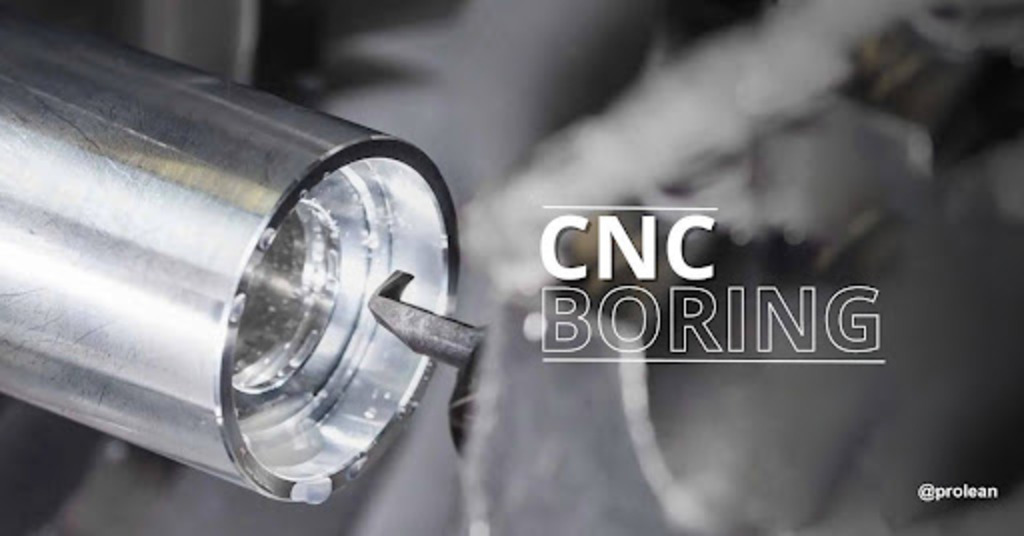
The CNC boring offers accuracy and efficiency faster than any other process in the modern industrial manufacturing world. The multi-caliper strength and ultra-modern software integrate to make complex metal handling simpler and more accessible. This multi-dimensional process works from removing finishes, and spindling adjustments, from metal crafting to workpiece designing, etc. This article will discuss key details about the boring machining process, its types, technicalities, and its importance by comparing it to other CNC machining techniques.
What is CNC Boring?
CNC boring is a process that employs a hole to further define its size and required dimensions with the assistance of digital software on the back end. The striking benefit of this process is that it controls and moves the cutting head to the desired position without any manual handling.
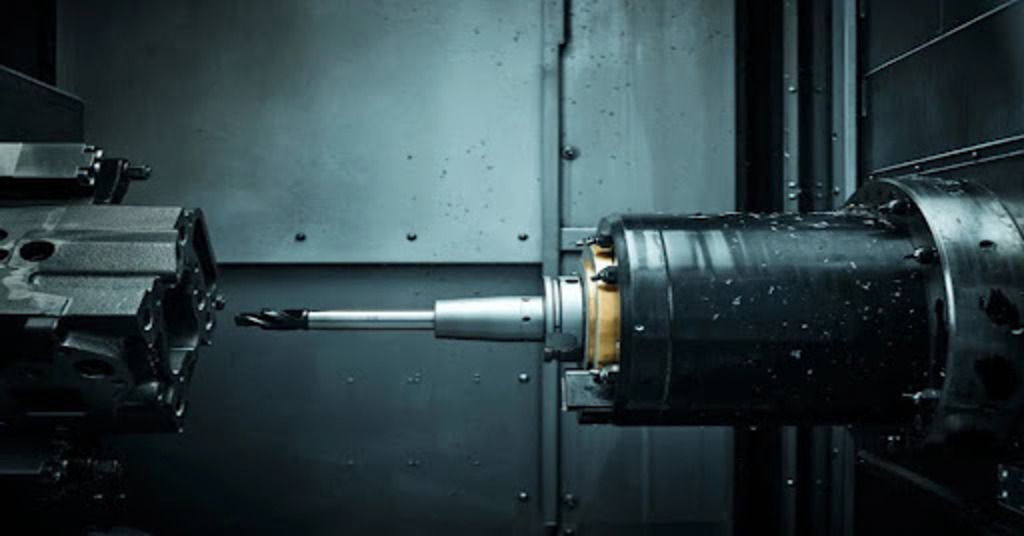
CNC Boring
CNC boring is principally done in multiple ways with various angles, such as vertical, horizontal, and compound angles. You can either use a stationary blade against the spinning workpiece or feed the spinning material against the stationary bit. Another possible way is to feed the stationary workpiece against the spinning bit and move it around. Although the feed rate and speed are adjusted to embellish the finish, they also minimize the noise.
Try Prolean Now!
CNC Boring Components
Boring machines have several components that work throughout the boring process. The key details of each component are presented below.
- Table
The table has clamps to restrict the workpiece’s movement during the process. It can be adjusted or installed in multiple orientations to facilitate workpiece feeding.
- Spindle
The spindle is the rotary drive for the boring tools. Its high-performance characteristics deliver torque accuracy and fast operation with perfect dimensions, especially if we compare boring vs drilling. Spindle efficiency relies upon the overall quality of the end product.
- Chuck
The chuck holds both regular and irregular workpieces on the boring mill. The primary function of the chuck is to overcome any misalignment and slippage during the boring process.
- Control Panel
The control panel allows the operator to specify parameters and input machining orders. All the matching operations from start to finish are managed from this front face of CNC boring.
- Coolant System
The cooling system keeps the heat emitted during boring to an acceptable level. The cooling agent circles through the heat-emitting parts and removes the possibility of workpiece overheating and heat distortion.
Boring Machining Process
Boring machining follows the same sequence as drilling, reaming, and turning. Initially, the targeted part (already drilled) is designated on the machining table. Then, the machinist meticulously fits the boring bar to the cutting insert, and lathe machines enable it to remove material by heading on the cast material in vertical and horizontal alignments.
The lathe machine rotates the job piece and allows cutting or boring bars to remove or widen the holes internally until they meet the intended specifications.
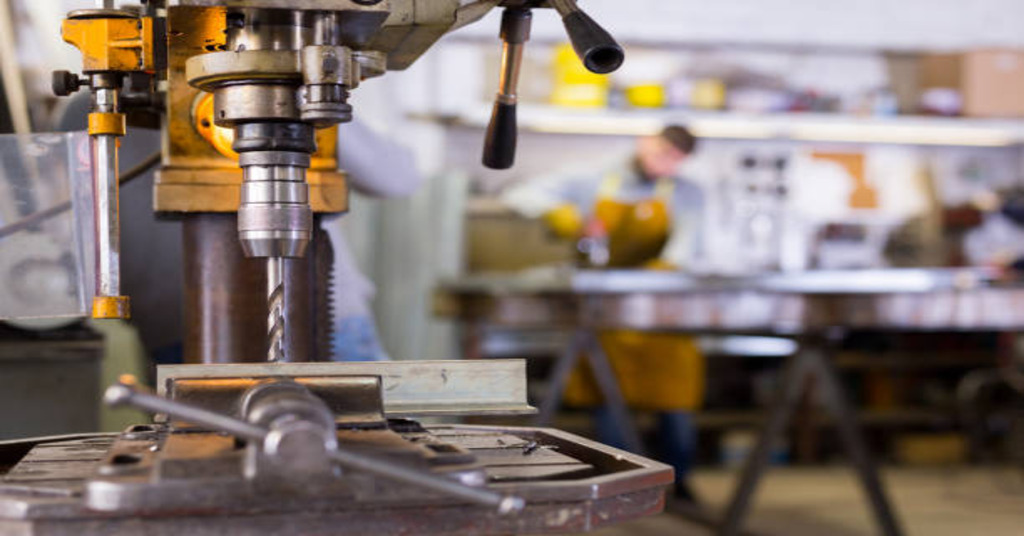
CNC boring machining
CNC Boring Materials
The proper boring material selection for CNC boring is crucial because it affects the overall product outcome. Therefore, each material has its properties and is used according to the project’s base requirements.
Aluminum
Aluminum is preferred for CNC machining because of its lightweight and machinability. Additionally, its non-corrosive and heat-transferring ability allows faster finishing rates. The automotive and aerospace industries primarily employ it.
Steel
It’s a hard material with high strength and durability. Several sub-grades of steel based on harness level are used nowadays. Steel is mostly employed for manufacturing machinery and construction elements.
Titanium
It has a high strength-to-weight ratio compared to other alloys. It is employed for the CNC boring process because of high-temperature stability and corrosion resistance. The medical and aerospace industries ideally use it.
Copper
Copper encloses all the basic requirements of CNC boring operations, such as high electrical and thermal conductivity. It is widely used in electrical wiring and heat exchangers, although it is a relatively soft material that needs custom handling.
Plastics
Plastic is extensively used for CNC boring mills due to its flexibility and easier handling. Numerous types of plastic, including PTFE, ABS, polycarbonate, etc., are used according to customer product needs. In addition, plastic is cheap and allows post-manufacturing finishes.
Checklist before initiating the CNC boring process
Key requirements of the CNC boring process need to be checked beforehand. To get the perfect outcome, following instructions should be considered.
Calibration
CNC milling machines are calibrated within different tolerance limits under which they are operated. Any deviation must be adjusted in time for operation efficacy.
Spindle Alignment
The spindle adjustment affirms the hole’s preciseness, size, and dimensions during the CNC boring operation. The accurate positioning of the tool and workpiece is the key determinant that overcomes any foreseeable error.
Speed Adjustment
The ideal speed adjustment and rotation rate of the spindle affect product quality. This more straightforward adjustment controls overheating, tool cutting, and hole dimensions.
Feed Rate
The feed rate is the speed at which the tool circles or moves over the workpiece during the CNC machining operation. The type of material being used impacts the feed rate. The sound adjustment eliminates the tool breakage and further soothes the finishing operation.
Tool selection
During CNC boring mills, multiple boring tools are used for every operation. The tool type relies upon the workpiece material used such as material toughness, tensile strength, stability, and machinability.
Workpiece Alignment Tools
The workpieces are adjusted and stabled for operation efficacy. The following are the tools through which you can align your workpiece against drilling bits:
Clamps
The workpieces are fastened before CNC boring to ensure their stability during the process. When workpiece movement is restricted, it is easy to shape and cut the workpiece precisely during the process.
Vises
Vises control the workpiece alignment with their tooth system. The choice of a suitable vise is critical for machining performance and product output. Vises are appropriate for complex, boring mill operations.
Magnets
Magnets allow the fastening of ferrous metals to the CNC boring mill and the separation process caused by them. They provide the convenience of quick installation and setting, making faster operation easy. They have been built to such quality that they are the most sought-after part machining tool for metalworking, especially in some applications.
Vacuum Plates
Vacuum plates made of suction technology are mounted on the surface of CNB milling machines, enabling the parts to be held in place against the process. They are particularly appropriate for fragile or anomalous small parts and thus prevent the possibility of brokerages caused by the clamping application process. This is how alignment precision is improved, which ultimately helps speed up the move from start to finish on machining tasks.
Try Prolean Now!
Types of CNC Boring Machines
A standard boring machine has various types. Let’s find out some of the component types of CNC boring machines;
Horizontal Boring Machines
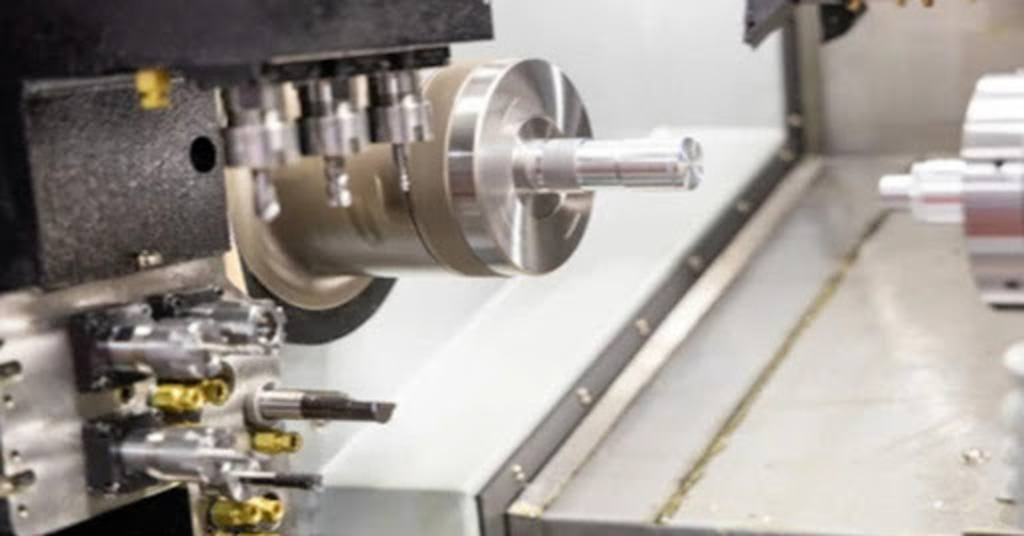
Horizontal Boring Machine
As the name implies, horizontal boring machines are used for repair, forging, drilling, reaming, and milling in large-diameter workpieces on the horizontal x-axis. They also help to enlarge predrilled holes or contours in the same workpiece. These machines are heavily used in heavy-duty infrastructural industries.
Table Type CNC Boring Machines
Typically, these machines are pretty similar to the horizontal boring machines in operation. In the process, these machines are designated on the table, and the workpiece is adjusted to the direction parallel to the machine’s spindle for drilling or shaping the job material to the required workpiece. The essential parts of the machine are a spindle and a workpiece.
Vertical Boring Machines
Vertical CNC boring machines create bores in upward and downward directions concentric to the vertical axis direction. These machines are heavily utilized for precision-demanding customary projects across large industrial sectors. Moreover, similar to horizontal machines, these inflate pre-existing holes in symmetrical or cylindrical objects.
Precision Boring Machines
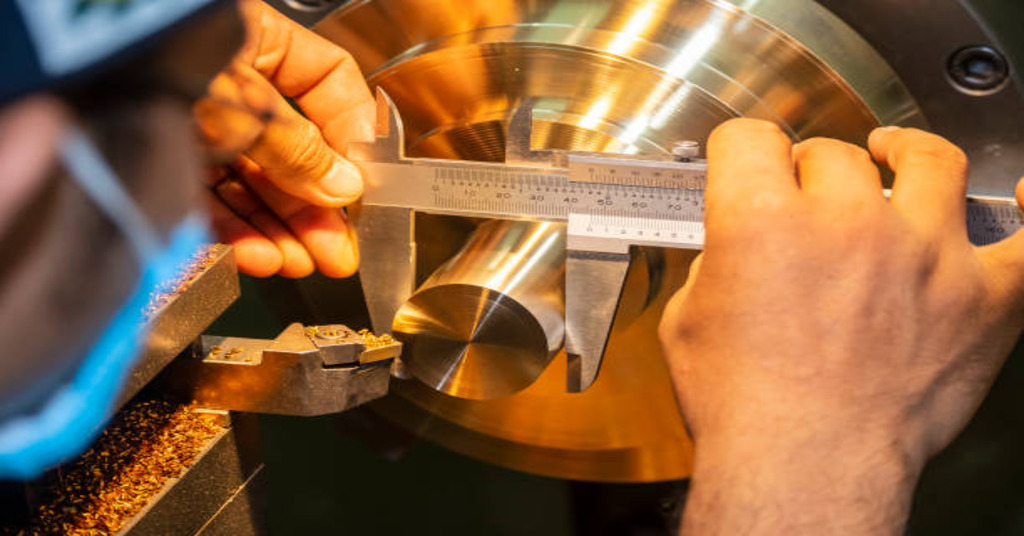
Precision boring machining
As the name suggests, these machines are capable of boring large-sized holes in workpieces. This CNC boring machining is exceptionally accurate and precise and able to meet tighter tolerance requirements and exact parts specifications. In addition, these machines offer high repeatability and dimensional stability in large internal hole parts manufacturing projects.
Comparing Boring To Other CNC Precision Manufacturing Techniques
The various CNC machining processes share similarities and are interchangeably used. Knowing the difference is crucial to having a successful manufacturing project ahead of time with minimal risk of faults. Let’s compare different CNC machining Processes’ accuracy, repeatability, and performance.
Drilling Vs. Boring
Bored well vs drilled well or quality difference lies in their operational ability; for instance, in parts manufacturing projects, drilling is deployed as a predetermined step for creating holes while enlarging or widening the pre-existing holes, and standard boring machines are used. Further to cnc boring, chip removal in machining projects is eased.
Boring Vs. Turning
Turning also employs a subtractive manufacturing process. Turing precisely removes chips, using a tool from a stationary part by rotating around the part or product to, reduce its external diameter. In addition, boring uses a non-rotating tool to carve or shape internal holes in a workpiece. Boring, as acquired for precision dimensions may require experienced professionals for drilling prospects. Turning, in contrast, may not need too many details, and requires minimum operator’s experience. When it comes to variety, and versatility, turning usually offers more benefits in terms of providing different machining options such as; 3, 4, and 5-axis machining compatibilities as per parts specifications.
Boring Vs. Reaming
Boring and reaming are typical processes of hole-making in manufacturing industries. The only difference lies in their tooling path geometry; however, both are used to subtract materials from parts to provide exact positional dimensions. Boring is generally assumed to be more flexible than standard reaming due to its ability to make contours of variant sizes and dimensions in low production volume runs in contrast to CNC reaming.
When Should CNC Boring Be Used In Your Project?
Let’s discuss the criteria for analyzing the suitability of CNC boring in your project. Consider certain things before employing CNC boring for parts manufacturing projects. This includes;
- Manufacturers must rely on CNC boring when parts require more precision and accurate dimensional stability in preexisting rough holes. For low volume, internal diameter holes, and long turnarounds, the boring machining process can be the best and most apparent.
- CNC boring, however, is more accurate and used for critical projects like straightening hole cuts. However, it is usually considered a slow, subtractive process, so it tends to imprint more costs when used for bulk order requirements.
- One must know that contours in extremely detailed parts or the use of CNC boring for more complicated design parts may experience deviation or friction in the holes.
- The primary use of a boring program or process to expand internal holes is by meticulously removing external part materials.
CNC Boring Services at Prolean
Prolean helps manufacturing sectors by providing high-standard quality checked parts at an affordable range. Our CNC Manufacturing service uses precise machines to meet your complex part requirements. Our professional experts, with over a decade of experience, help you with projects requiring tight dimensions without compromising on rigorous quality part standards. Whether you are looking for small-scale projects or bulk manufacturing, our competencies can fit your needs. From DFM analysis to end-part manufacturing, prolean’s team helps you through each step for optimal product development.
Trust Prolean to bring your designs to reality. Contact us now to get a free instant online quote from our engineers.
Try Prolean Now!
Summing Up
CNC boring is emphasized for its exceptional repeatability, smooth finishes, versatility, and optimal performance for contouring deep internal holes. For meeting or fitting to rapid prototyping needs, it helps manufacturers to precisely fabricate even more complicated holes in parts in minimal time leads. However, certain complexities surround this cutting-edge CNC technique in terms of complex bores, tool geometry, and initial setup requirements. Despite these, it is notably a popular choice for CNC machining manufacturers to meet the exact specifications of their projects.
In addition, this article highlights the key aspects of the boring process and essential considerations for employing it for optimal outcomes in CNC manufacturing projects.
Read more:
- What is Jig Boring? Machine, Process, and Benefits
- CNC Precision Machining Explained: Benefits & Practical Uses
- Machining Robotics: Precision and Speed
FAQ’s
Q1. What are the errors in boring machining processes?
The tool damage or wear and tear rate is relatively high in the boring machining process. Additionally, surface finish and allowance allocation adjustment may complicate the process and lead to unsatisfactory results.
Q2. Name the tools used in boring machining.
Numerous tools are used to enlarge the hole size in pre-drilled workpieces. Some of the most common include;
- Boring bars
- Boring Heads
- Tool holders & inserts
Q3. How accurate is a precision CNC boring machine?
As the name suggests, the machines accurately achieve even slight depth cuts and small dimensional tolerances up to 0.0002” to 0.005’’.
Q4. What are the limitations of boring machines?
CNC boring machines are limited in usage because they need expert professionals to adjust movement around parts to meet exact internal depth cuts and part specifications. Moreover, the machines can lead to taper cut formation.
Q5. Which industries employ CNC boring?
Boring machines are widely used in aerospace, automobiles, industrial manufacturing, and medical sectors. These manufacturing firms use boring machines to create thin-walled designs and symmetrical or cylindrical parts.




As a mechanist, i can say boring requires very careful handling of machining parameters.